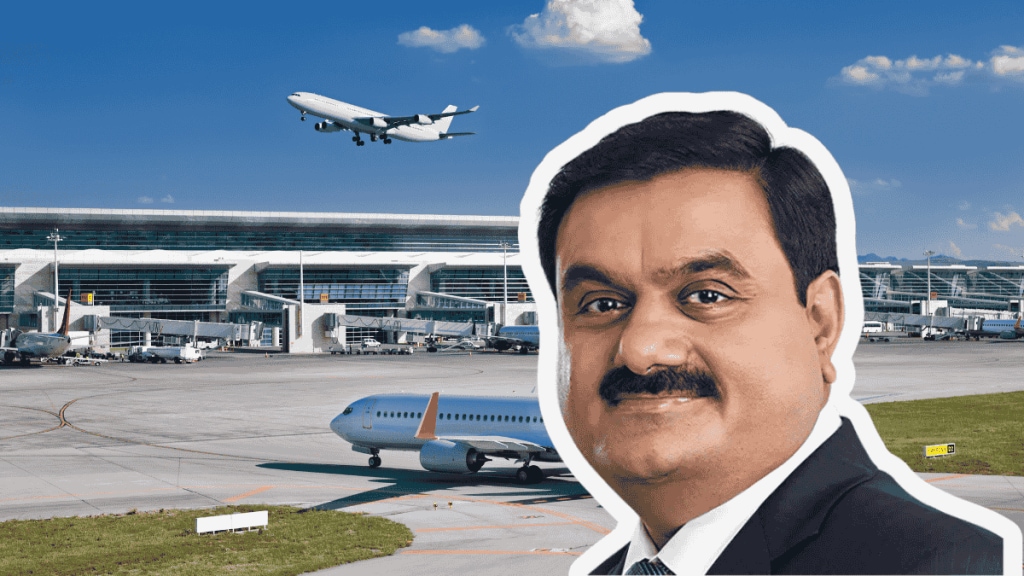The Adani Group is planning to invest Rs 57,333 crore in the Navi Mumbai International Airport by 2029–30 (FY30), as per a report by Business Standarad. According to a regulatory filing reviewed by Business Standard, the investment will fund the first three phases of the greenfield project. These phases include the construction of two passenger terminals, dual runways, cargo terminals, metro connectivity, and a multi-modal transport hub.
Navi Mumbai airport to operate alongside Chhatrapati Shivaji Maharaj International Airport
The project is being led by Navi Mumbai International Airport (NMIAL), a joint venture between Adani Group’s Mumbai International Airport (MIAL) and CIDCO. Once completed, the Navi Mumbai airport will operate alongside Mumbai’s existing Chhatrapati Shivaji Maharaj International Airport (CSMIA), creating a dual-airport system for the city.
Passengers to pay up to Rs 1,225 as user fee at Navi Mumbai airport
Business Standards reports that the Airports Economic Regulatory Authority (AERA) approved an ad hoc tariff for the airport on June 20, including a user development fee (UDF) of Rs 620 for departing domestic passengers and Rs 1,225 for departing international passengers. Arriving passengers will pay Rs 270 (domestic) and Rs 525 (international).
These charges will be applicable from the airport’s expected commercial opening in August 2025 until March 31, 2026, or until regular tariffs are finalised. AERA also approved aircraft landing charges of Rs 1,400 per metric tonne for domestic flights and Rs 1,850 for international flights, reports Business Standard.
AERA said this interim tariff was necessary to “avoid regulatory vacuum at the major airport,” as the regular tariff process involves a detailed review and stakeholder consultation.
First two phases to handle 20 million flyers
The first two phases of development will require an investment of Rs 22,531 crore and focus on the southern half of the site. This includes a 3,700-metre-long southern runway, full-length dual taxiways, Terminal 1, and an apron with 29 contact stands. It will also feature integrated cargo and general aviation terminals.
Terminal 1 will be a multi-level structure with domestic and international piers and a large parking facility. This phase will also include an interim air traffic control tower, fire stations, and new road access points from both the eastern and western sides of the site.
According to Business Standard, once completed, these phases will support 20 million passengers annually and handle 0.5 million metric tonnes of cargo.
Phase 3 to scale capacity to 50 million passengers
From FY26, the third phase will begin with expansion into the northern part of the airport site. A second runway, Terminal 2, and expanded cargo, MRO (maintenance, repair and overhaul), and general aviation facilities will be developed.
Terminal 2 will be the airport’s largest terminal and include four piers, underground parking for 3,500 cars, and gates for large widebody aircraft such as the Airbus A380. A new 104-metre-high air traffic control tower will also be built in this phase.
Metro, road network planned in Phase 3 to improve connectivity
Significant transport integration is planned in Phase 3. Metro lines from Mumbai and Navi Mumbai will connect to three metro stations inside the airport premises. A multi-modal transport hub will include an elevated metro station, a bus terminal, automated people movers, and skywalks connecting terminals.
Flyovers, vehicular underpasses, and looped roadways will help manage the movement of passengers and staff across the airport.
Passenger traffic projections and further expansion
According to NMIAL estimates, the airport will handle 11.98 million passengers in FY26 and 33.9 million by FY30. Passenger traffic is expected to reach 20 million by FY28, which will trigger the Phase 3 expansion.
In its filing, AERA said, “Airport operator (NMIAL) has proposed to infuse an amount of Rs 57,333 crore (approx.) on creation of airport facilities in the Navi Mumbai International Airport during the first three phases out of five phases.”
The final two phases—Phase 4 and Phase 5—will each add capacity for an additional 20 million passengers. This will take the total capacity to 90 million passengers per annum. The timeline for these final phases will depend on actual traffic growth.
NMIAL said the Navi Mumbai project is essential, as the existing CSMIA has “both landside and airside constraints for expansion.”

